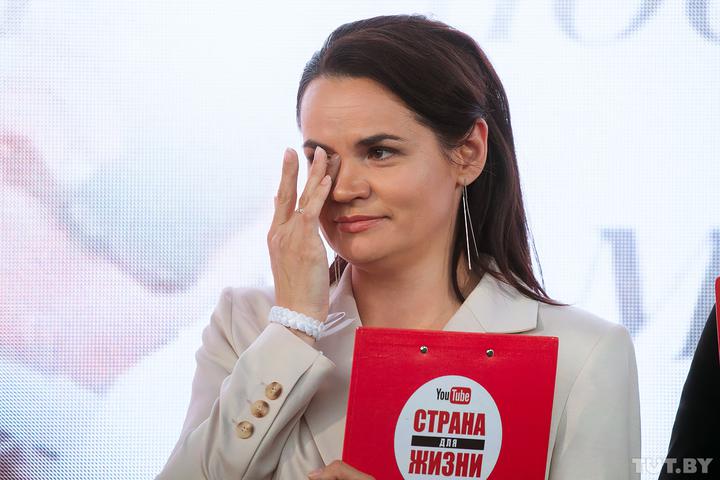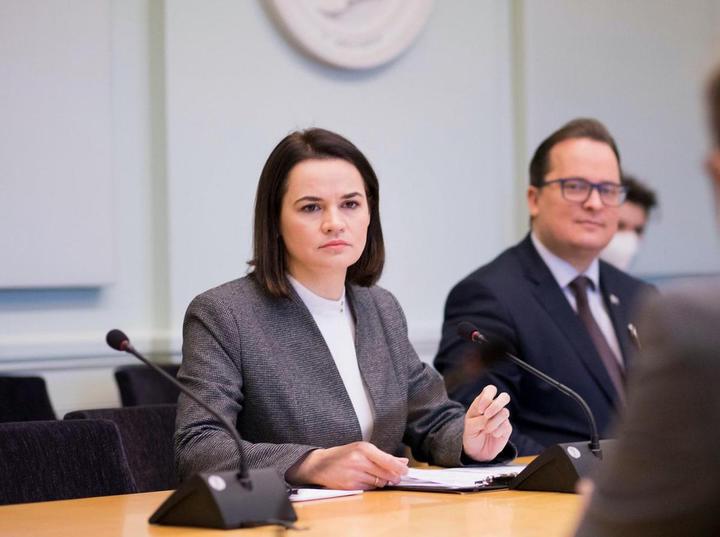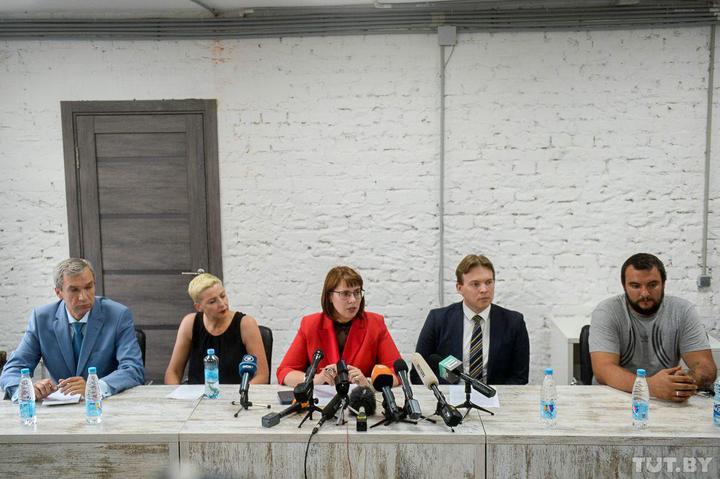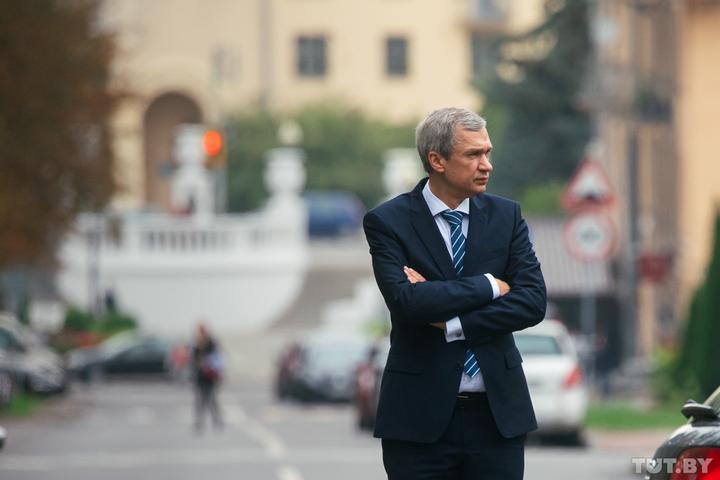What are their responsibilities and how are the structures of the Belarusian opposition related?
4 January 2021 | Alena Talkachova, TUT.BY

After the presidential elections in Belarus three structures, the headquarters of Sviatlana Tsikhanouskaya, the Coordination Council (CC), and the National Anti-Crisis Management (NAM), became the new opposition force. TUT.BY tells how these structures were formed, what their main goals are, and how they are related to each other.
The headquarters of Sviatlana Tsikhanouskaya
Sviatlana Tsikhanouskaya’s headquarters was formed in its current state after the elections when she had ended up in Lithuania.
On 10 August the day after the elections, Sviatlana Tsikhanouskaya, accompanied by her lawyer Maxim Znak, arrived to the Central Election Committee to appeal the results of the elections. After spending there several hours with the representatives of government agencies she left the building alone using an emergency exit. Znak left the Central Election Committee without Tsikhanouskaya.
The next day it turned out that Tsikhanouskaya had already moved to Lithuania. A video of her reading out a scripted text from a piece of paper urging her supporters to abandon mass protests started to circulate. But many doubted that the video message had been recorded voluntarily.
Later on, in numerous interviews Tsikhanouskaya said that at the CEC she had been left in an office with high-ranking officials from law enforcement agencies who had told her that she had to choose between the safety of her children or the imprisonment.

“Of course, I chose my children. They [the security officials] had a conversation with me and then took me home where I had to wait for my departure from Minsk. I came to the election commission at about 3 pm and at 7 pm they drove me home. By 10 or 11 pm I was on my way out of the city. My children had already been in Lithuania,” Tsikhanouskaya said.
In Vilnius, Tsikhanouskaya found herself without her team. Only Maria Moroz, the head of her headquarters, had left for Lithuania with her. As Tsikhanouskaya described, her new team had begun to form right there as some people had started to express their desires to help Tsikhanouskaya. For example, a journalist and political activist, Franak Viachorka, joined Tsikhanouskaya’s team on his own and was appointed her adviser on international affairs.
“After Sviatlana Tsikhanouskaya left for Vilnius, she had stopped participating in politics for several weeks. And then she decided to make a come back not just as an ordinary citizen, but as a leader, who Belarusians had voted for. And from the end of August and up to the present day, we have seen the emergence and becoming of the real leader who represents Belarus all over the world with dignity,” Franak Viachorka told TUT.BY.
Sviatlana Tsikhanouskaya herself spoke about it in an interview with TUT.BY.
“When I ended up here [in Vilnius], I knew no one. It was great that Alexander Dabravolski, the Head of the Expert Council of the United Civil Party (UCP) and a member of the Political Council of UCP, and Anna Krasulina, the Press Secretary of UCP, came along. We began considering what to do next. Franak Viachorka called to say that he wanted to help us and join our team,” said Tsikhanouskaya.
As Franak Viachorka explains, Tsikhanouskaya’s headquarters today, in fact, is a political executive center and consists of several structures. They are Tsikhanouskaya’s Office, the administration, and the Cabinet ,where the representatives of Tsikhanouskaya on economic reforms, youth and students, constitutional reform, international affairs, human rights, and education are located.
Tsikhanouskaya’s headquarters considers its main goals to be the stopping of the violence in Belarus as well as strengthening the protests, supporting the groups and initiatives that have already been in operation as of today.
“The Office and the Cabinet are working on the development of media infrastructure by supporting the new media sources like telegram channels, bloggers, as well as traditional media sources. They also help repressed students so that they can study abroad remotely and continue their fight in Belarus. They are working on the preparation of the constitutional reform, reforming the Electoral Law, getting together the documents on organizing the negotiations with the authority in power. Human rights activists are working on the initiating the universal jurisdiction cases. The first such case has been initiated in Lithuania and similar ones will be open in the Czech Republic, Poland, and France. In short, now the Office and the Cabinet are working on both short-term measures of helping the protest, and on long-term measures of rebuilding Belarus when the current system collapses,” says Viachorka.
Communication with the National Anti-Crisis Management (NAM) and the Coordination Council
As the adviser to Tsikhanouskaya explains, the Office and the Cabinet cooperate with telegram channels, various foundations, courtyards initiatives, and political parties in Belarus. Their strategy and tactics are coordinated with the Coordination Council.

“But since the Coordination Council is mostly located in Belarus, they are not able to proceed the same way the Office and the Cabinet does. The Coordination Council conducts its activity in a more cautious and sensible way in order not to expose the members of the Coordination Council as they are being constantly summoned for interrogation in the Investigative Committee. But, in fact, Sviatlana Tsikhanouskaya is the leader and the creator of the Coordination Council both in our society and on the international arena. NAM is, rather, an expert-political center, where former officials, diplomats, and experts in various fields have gathered together. Their task is to develop the reforms, the roadmaps of actions for the transitional period. The main coordination between the Office of Tsikhanouskaya, the Coordination Council and NAM takes place on Zoom. We call each other several times a week. Large initiatives are coordinated daily, small ones exist autonomously,” says Viachorka.
The Coordination Council
On 14 August a former presidential candidate Sviatlana Tsikhanouskaya, who at that time had already been residing in Lithuania, announced the creation of the Coordination Council for the transfer of power in Belarus. On 19 August the Coordination Council began its work. The Council included representatives of civil society, well-known Belarusians, lawyers, entrepreneurs, IT-specialists, politicians, political scientists, doctors, teachers, representatives of culture, trade unions, and factories, athletes, feminist activists, youth representatives, economists, and journalists.

Source: Yauhen Yerchak, TUT.BY
The Presidium of the Coordination Council consisted of Svetlana Alexievich, Maria Kalesnikava, Maksim Znak, Pavel Latushka, Volha Kavalkova, Siarhei Dyleuski and Liliya Vlasova. The Council has 57 core members and 5,536 general members.
The Coordination Council also has 10 working groups on economics, education, human rights, business support, independent trade unions as well as a Christian group, a feminist group, a regional support group and a platform that helps to organize elections to collective bodies of territorial public self-government (CBTPSG).
Today the Coordination Council has three main requirements for the authorities which are to release all political prisoners, to stop political persecution of citizens and bring the perpetrators to justice, and to conduct new and fair elections.
“Within its 139 days of work in 2020 the Coordination Council has created and / or supported seven projects that help put pressure on the regime, collect data on violations by the authorities for further investigation and help develop civil society. The economic group of the Coordination Council has developed the document called ‘The Principles of Economic Development of Belarus’ in which they propose the development of the economy of Belarus in the transitional period after the change of the authority takes place. The document has been prepared with the participation of the leading international economists. Representatives of the Coordination Council also have proposed the development of ‘The Concept for Restoring the Legality of National Reconciliation’ as a step to overcome the split between the society and the representatives of the government agencies. All citizens of Belarus had been able to make suggestions on the proposed Concept throughout a one-month period. The creators of the Concept have considered the suggestions, and the final version of the document will be published in January,” says Anton Radnenkou, the press secretary of the Coordination Council.
Pressure on the Coordination Council
The regulations of the Coordination Council stipulate that the Council neither aims to seize the state authority by unconstitutional means nor calls for the organization and preparation of actions that violate public order. But, nevertheless, six days after Tsikhanouskaya had announced the creation of the Coordination Council, the Prosecutor General’s Office stated that the creation and activities of the Coordination Council were aimed at seizing the state authority and harming the national security of Belarus. And the criminal case against The Coordination Council was initiated.
In August members of the Presidium of the Coordination Council were summoned for interrogation as witnesses. Later, Maksim Znak, Maria Kalesnikava and Illia Salei were detained for “seizing the authority”. The rest of the members of the Presidium of the Coordination Council, except Liliya Vlasova, who had spent several months in a pre-trial detention center No. 1 within the framework of another criminal case, left Belarus.
According to the Council, from August to December 2020, 27 core members of the Coordination Council were summoned for interrogation, 20 times core members were detained, four members are still in custody, and more than 610 days core members of the council have collectively spent behind bars since the body began to work.
Communication with the headquarters of Tsikhanouskaya and NAM
The Coordination Council coordinates its activities with the headquarters of Sviatlana Tsikhanouskaya and the National Anti-Crisis Management.
“The Coordination Council is the only structure that works in Belarus and adheres to a moderate position advocating the need for dialogue and reconciliation in the society,” the Council notes.
The National Anti-Crisis Management
NAM was created at the end of October by a former head of the Kupala Theater, a member of the Presidium of the Coordination Council, Pavel Latushka. As Latushka explained, while the Coordination Council has been created to conduct negotiations, the NAM will be the body that ensures the achievement of the goals such as the beginning of the negotiations and ensuring the stability in the country at the time of the transition of the authority to the democratic forces. This body will also address the challenges that the country will face after the former president leaves and until the new elections and the transfer of authority to a new government happen.

Today, as the NAM explains, the National Anti-Crisis Management’s main goals are “a faster approach of the day of Lukashenko’s plane departure”, the preparation for the transitional period, and going through it successfully.
Within the Anti-Crisis Management, working groups have been formed in six areas- foreign policy, economics and finance, security, justice, social policy, and regional development.
“The National Anti-Crisis Management has developed a list of specific actions in various fields that will bring Belarusians closer to victory over Lukashenko. They are the increase of the pressure by the means of sanctions, prevention of the illegal ways of enterprises’ privatization, assistance in putting together the lists of perpetrators, cooperation with international organizations on police reform, creation of National Embassies and other steps,” the NAM says.
Another important part of NAM’s program is coming up with an action plan for the transitional period after the victory of the democratic forces and before the new president of Belarus takes office. NAM has already developed plans in four areas of economics and finance, foreign policy, the justice sector, and reform of the infrastructure of the internal affairs. These plans contain detailed points which NAM has been already working on. The plans for the remaining areas are under development now.
“Our teams are not only developing plans for the transitional period. Everyone understands perfectly well that the transitional period is impossible without the victory over the regime. In cooperation with the headquarters of Sviatlana Tsikhanouskaya and the Coordination Council, we are focusing on making the victory day approach faster. Together we are working to increase sanction pressure, collect evidence of crimes for the Unified Crime Registration Book, inform civil society on important economic and legal issues, and are engaged in other projects that bring the transitional period closer,” said Yelena Zhivaglod, a NAM coordinator.
Communication with the headquarters of Sviatlana Tsikhanouskaya and the Coordination Council
The National Anti-Crisis Management works in close contact with both Sviatlana Tsikhanouskaya’s headquarters and the Coordination Council. All structures work with a certain autonomy, but at the same time they engage in regular communication and synchronize their actions.
“Large projects, like the Unified Crime Registration Book, are launched by the cross-groups, which include representatives of several political structures and civil initiatives. All three structures, the headquarters of Sviatlana Tsikhanouskaya, the Coordinating Council and the National Anti-Crisis Management, are implementing a single strategy,” say at NAM.